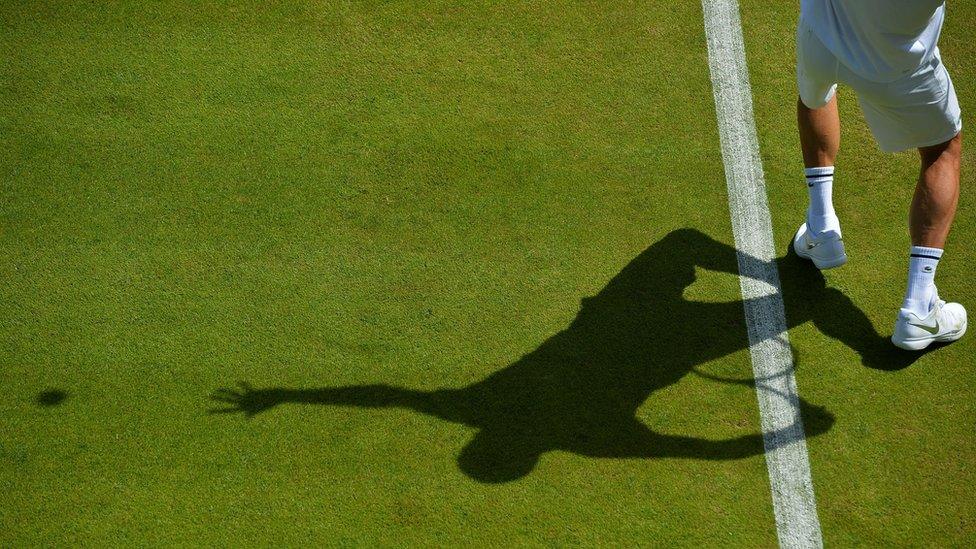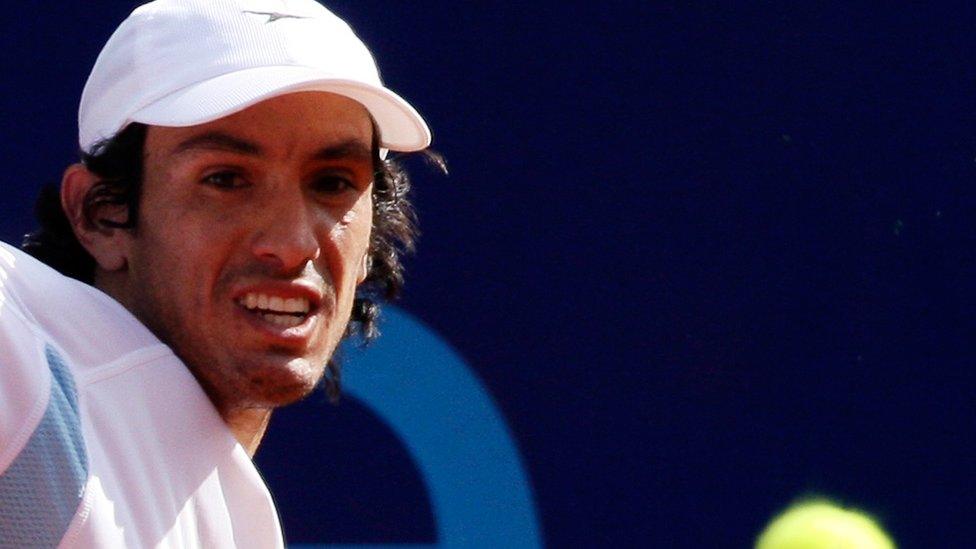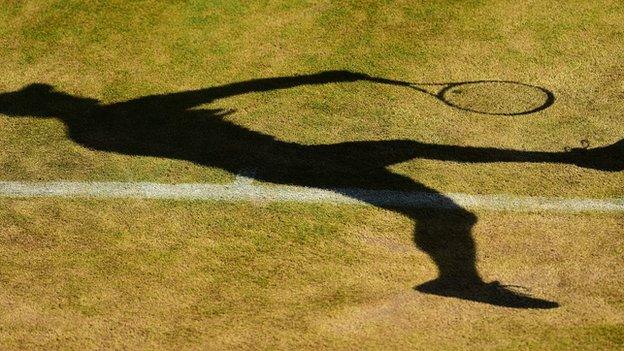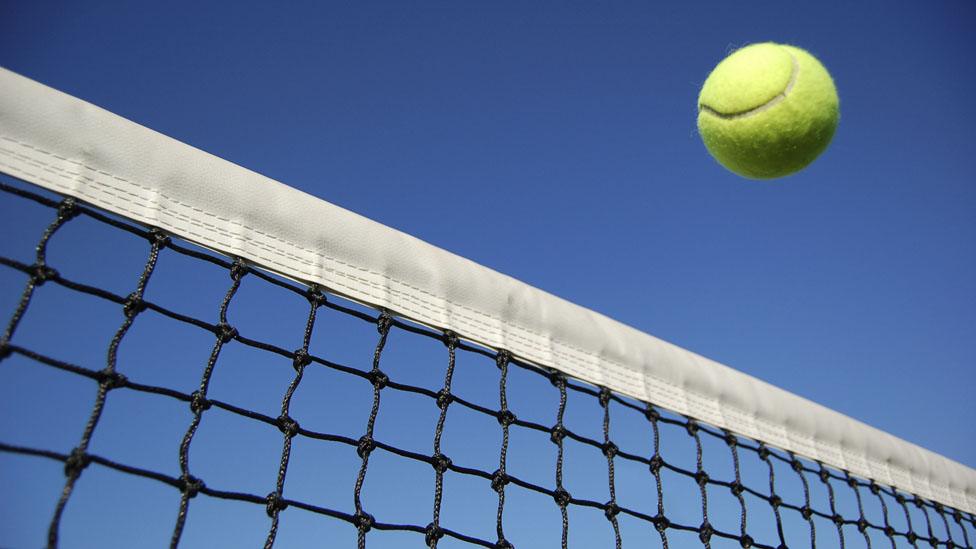Tennis match-fixing allegations explained
- Published

What are the allegations?
The BBC and news site BuzzFeed have obtained secret files that contain evidence of suspected match fixing in professional tennis. The files indicate that:
16 tennis players who were ranked in the world's top 50 were repeatedly flagged to anti-corruption body the Tennis Integrity Unit over a decade
There were suspicions those 16 players intentionally "threw" matches
All of the players, including winners of Grand Slam titles, were allowed to continue competing
Betting syndicates in Russia and Italy made huge sums from matches thought to be fixed - including three at Wimbledon
28 players involved in those matches should be investigated, but findings were never followed up, a confidential report said

What is match fixing and how does it work?
The allegation is that players took money to intentionally lose all, or part, of matches so that gamblers were able to win bets.
There are various ways a match may be fixed, as it is possible to bet on specific parts of a match.
In some cases, investigators thought they saw a pattern where a player would win the first set of the match and get slightly ahead in the second, meaning the odds would move in their favour.
At this point, when winnings would be maximised, the corrupt gamblers would place a bet on the other player. The fixing player would then lose the remaining sets.
In other cases, players might fix part of a match - even if they won overall - for example by losing just the second set.

Which players are involved?

Vassallo Arguello, from Argentina, was cleared of match fixing following a 2007 investigation
The BBC and BuzzFeed have seen the names of 16 players in the top 50 who have come under suspicion.
The journalists have also seen names of other current players the Tennis Integrity Unit (TUI) has been repeatedly warned about by betting organisations, sports integrity units and professional gamblers.
However, both news outlets have decided not to name the players.
This is because without access to their phone, bank and computer records, it is not possible to prove they took part in match fixing.
An investigation set up by the Association of Tennis Professionals - which represents the men's professional game - looked into suspicious betting activity after a game involving one-time world number three player Nikolay Davydenko, from Ukraine, and Martin Vassallo Arguello, from Argentina, who reached a career high of 47 in the world.
Both were cleared, external of violating any rules, but the investigation developed into a much wider enquiry looking into a web of gamblers linked to top-level players.

How much could players make?
In 2011, Daniel Koellerer was banned for life from professional tennis over alleged match-fixing but denied the claims.
The current world number one ranked player, Novak Djokovic, says early in his career he was offered - and rejected - £110,000 to lose a match.
Former Austrian professional player Daniel Koellerer says he was offered bribes in Moscow, Chennai (Madras), and Paris. The largest of these was more than $50,000 (£35,000).
In 2011, he was banned for life from professional tennis over alleged match fixing but denied the claims, saying he refused each time.
BBC tennis correspondent Russell Fuller says players outside the top 200 are unlikely to earn much more than £40,000 in prize money each year - even before coaching, travel and hotel expenses are taken into account.
"There are clearly temptations for lower-ranked professionals," he said.
For the gamblers, the possible rewards are certainly big. Gambling syndicates that have come under suspicion have made as much as £250,000 on a match.

- Attribution
- Published18 January 2016

- Attribution
- Published18 January 2016

- Published18 January 2016
